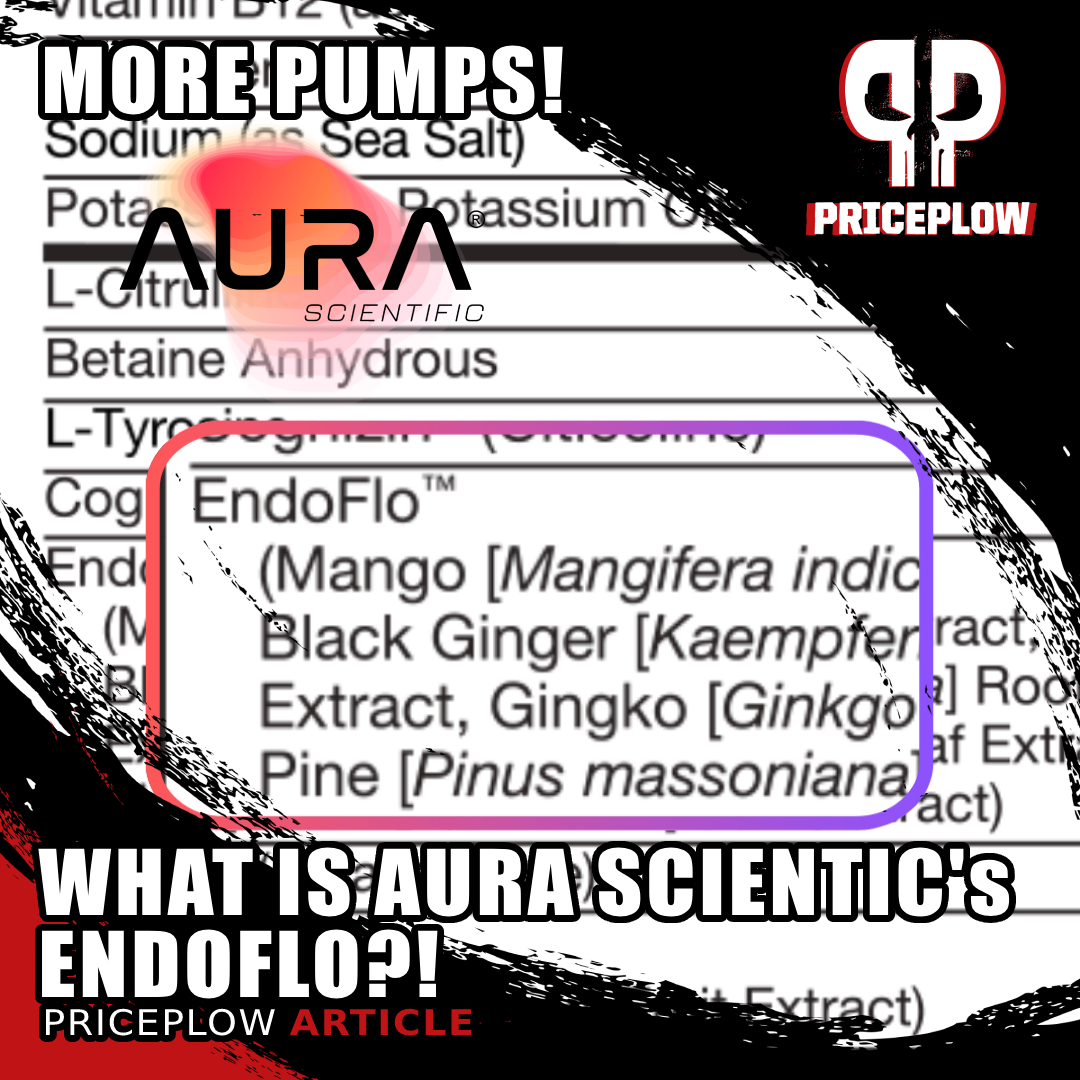
This blood flow-boosting ingredient, EndoFlo, consists of four key constituents: Mangifera indica (mango fruit extract), Kaempferia parviflora (black ginger), Ginkgo biloba, and Pinus massoniana (pine bark extract).
In May of this year, we announced the formation of a new ingredient developer named Aura Scientific, who introduced four novel ingredients:
- NeuroRush (coffee fruit extract for mood and focus)
- EndoFlo (blend for blood flow and athletic performance)
- CapsiBurn (red pepper extract encapsulated in CLA)
- ProtoTest (DHEA/testosterone booster with protodioscin)
A few cutting-edge brands have already begun using these ingredients with great success. Specifically, we're referring to ProSupps Thermo (NeuroRush and CapsiBurn), Magnum Nutraceuticals Limitless X16 (NeuroRush and EndoFlo), and ProSupps Jekyll (NeuroRush and EndoFlo).
Pumping success with EndoFlo
With the Limitless X16 launch going so well that they've added three new flavors to complement the first three, it's time we explored what's making the pumps so incredible. One reason is that Magnum supports its high dose of citrulline with EndoFlo.
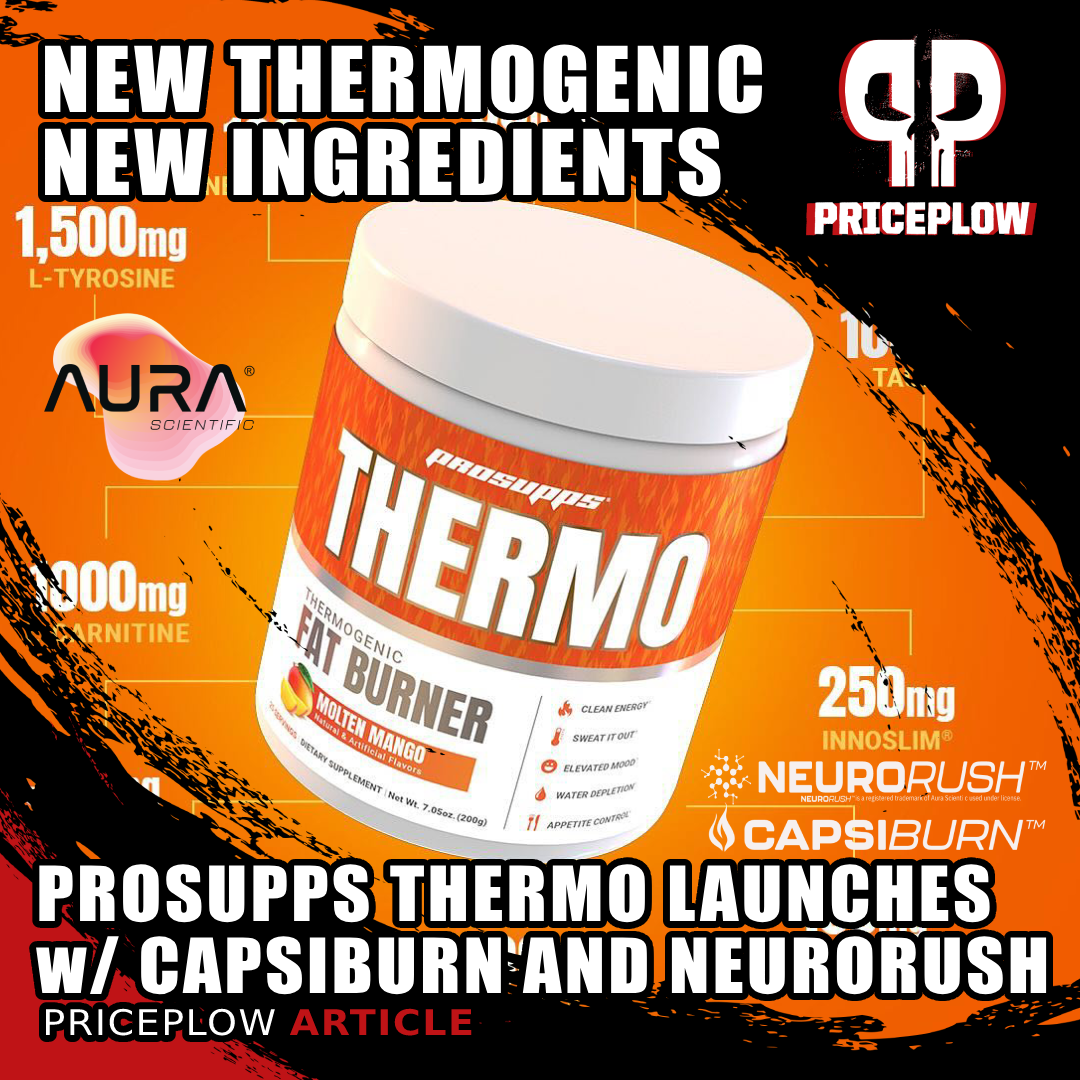
ProSupps Thermo is a new fat burning powder that promises energy and appetite control with exciting new ingredients like CapsiBurn and NeuroRush from Aura Scientific!
In today's article, we take a deeper look at this blood flow-boosting ingredient, which is composed of four key constituents:
- Mangifera indica (mango fruit extract)
- Kaempferia parviflora (black ginger)
- Ginkgo biloba
- Pinus massoniana (pine bark extract)
We'll break down the science of each part and how they increase blood flow and support muscle tissue. This includes ginkgo biloba, which is commonly known as a nootropic ingredient but increases blood flow! First, sign up for our future EndoFlo and Aura Scientific news alerts, and let's get into it:
Subscribe to PricePlow's Newsletter and Alerts on These Topics
What is Aura Scientific's EndoFlo?
EndoFlo is a proprietary blend of four specific botanical extracts selected for their powerful ability to enhance vascular health and optimize workout performance: Mangifera indica (mango fruit extract), Kaempferia parviflora (black ginger), Ginkgo biloba, and Pinus massoniana (pine bark extract).
While some of these components have overlapping effects, each ingredient brings its own unique array of health benefits, making EndoFlo a powerful ergogenic addition to any next-generation pre-workout formula. Below, we delve into the details and benefits of each of these four components.
-
Mangifera indica (Mango Fruit Extract)
Mangifera indica, commonly known as mango, has traditionally been used to treat ailments such as backache and bronchitis. The fruit of the mango tree is rich in several potent volatile compounds, with mangiferin being the most notable. Mangiferin has been lauded as a "natural miracle bioactive compound"[1] due to its wide range of beneficial effects – and it does seem to be something of a silver bullet, as we've seen several mangiferin-based ingredients hit the market in the last three years, each with very different intended applications.
No significant changes in cardiovascular function were caused by mango leaf extract / mangiferin administration.[2]
For our purposes, the most relevant benefit of mangiferin stems from its ability to support and protect the cardiovascular system. For instance, in one study, rats that were subjected to isoproterenol-induced myocardial infarction (heart attack) fared significantly better when co-administered mangiferin.[3] More broadly, mango polyphenols have shown protective effects against diseases associated with oxidative stress.[4] Mangiferin's antioxidant properties help mitigate the damage caused by free radicals, thus supporting overall cardiovascular health.
PDE5 Inhibition
When it comes to improving cardiovascular function, the key thing to know about mangiferin is that it's a potent phosphodiesterase type 5 (PDE5) inhibitor.[2] PDE5 is an enzyme that breaks down cyclic guanosine monophosphate (cGMP), a molecule that promotes smooth muscle relaxation. Through PDE5 inhibition, cGMP levels increase, leading to relaxed blood vessels and improved blood flow. This is such a potentially powerful mechanism that pharmaceutical PDE5 inhibitors are now used to treat serious cardiovascular diseases, including pulmonary arterial hypertension and heart failure.[5]
Besides helping improve arterial function, PDE inhibition can also improve blood microvessel function as well. For example, mango fruit extract has been shown to improve blood flow to the skin. While this may sound trivial, it's not a small effect – one study found that supplementation with mango fruit extract improved cutaneous blood flow by a whopping 54%, an effect size that has the potential to noticeably improve a person's appearance.[6]
Activating Sirt1 and AMPK
That improvement in microcirculation is attributed partly to mechanisms involving the activation of Sirt1 and AMPK,[7] which are important regulators of metabolic and vascular functions. Both significantly enhance cardiovascular function through their roles in cellular energy regulation and stress response:
- SIRT1, a NAD+-dependent deacetylase, promotes mitochondrial biogenesis and antioxidant defense, ultimately reducing oxidative stress and improving endothelial function.[8]
- AMPK, on the other hand, is an energy sensor activated during low energy states, stimulating glucose uptake and fatty acid oxidation, thus enhancing cardiac energy efficiency.[9]
-
Kaempferia Parviflora (Black Ginger)
Kaempferia parviflora, or black ginger, is a plant native to Thailand and Laos, traditionally used to treat digestive disorders, cardiovascular issues, and more.[10] Amazingly, this plant has been shown to possess disease-combating anti-allergenic, anti-inflammatory, anti-mutagenic, anti-depressive, anti-cholinesterase, anti-microbial, anti-ulcerative, cardioprotective, anti-obesity, and aphrodisiac properties. Quite a laundry list of amazing benefits – all substantiated by peer-reviewed scientific evidence![11]
Black Ginger (Kaempferia parviflora) looks like ginger, but is darker inside! And this brings some serious anti-inflammatory potency. Image courtesy Wikimedia.
Key constituent: 5,7-Dimethoxyflavone (DMF)
The root of black ginger contains a dizzying array of bioactive constituents, with a flavonoid called 5,7-Dimethoxyflavone (DMF) arguably being the most important. This flavonoid exhibits a range of beneficial effects, particularly in the context of physical performance and metabolic health.
For example, 5,7-Dimethoxyflavone has shown remarkable results in animal studies related to physical performance – improving muscle endurance, grip strength, and exercise performance.[12,13]
2020 human study on Kaempferia parviflora
In a human study from 2020, a randomized, double-blind, placebo-controlled study, researchers examined the effects of a standardized Kaempferia parviflora extract on athletes from various sports, including soccer, track-and-field, handball, boxing, wrestling, and judo. A handful of the extract's primary bioactive constituents – methoxyflavones (DMF, TMF, and PMF) – were analyzed as chemical markers.[14]
Black Ginger (Kaempferia parviflora) extract improved osteoarthritis and histopathological markers of arthritis in a rat model.[15]
Over the study period of 12 weeks, the Kaempferia group showed significant improvements in physical performance, compared to the placebo group. These improvements included enhanced right-hand grip strength, back and leg strength, 50-meter sprint times, and, crucially, VO2 max, the all-important metric for cardiovascular capacity.
More specifically, soccer players, who formed the majority of participants, demonstrated notable benefits in grip strength and sprint performance, while track and handball athletes experienced increased grip strength, while boxing athletes showed better sit-and-reach test results.[14]
Mechanisms of action
It seems that these effects are mediated through the activation of the PI3K-Akt pathway, crucial for muscle growth and protein synthesis.[10,16] Additionally, DMF enhances mitochondrial biogenesis,[17] which is a critical pathway for improving cellular energy production and endurance.
Vascular and Anti-Inflammatory Benefits
Magnum Nutraceuticals Limitless X16 pre-workout is on the next level with Aura Scientific's EndoFlo for mind-blowing pumps, NeuroRush for added energy and laser focus, and so much more.
Black ginger has demonstrated potent vasodilatory effects, promoting blood flow and reducing vascular resistance. Studies have shown that DMF can induce vasorelaxation in rat aortic rings,[18] suggesting its potential to enhance blood flow in humans. Furthermore, black ginger exhibits significant anti-inflammatory properties,[15,19,20] which can help reduce exercise-induced inflammation and support overall cardiovascular health.
Beyond its performance-enhancing and vascular benefits, black ginger also shows promise in metabolic health. DMF has been found to
- improve glucose metabolism,[12] help normalize insulin levels, and
- reduce adipogenesis (the formation of fat cells).[21,22]
These effects make black ginger a valuable ingredient for supporting metabolic health and weight management.
Finally, black ginger is, like mango fruit extract, loaded with PDE5-inhibiting compounds,[10] which should further contribute to its role in promoting vascular health and enhancing blood flow.
-
Ginkgo Biloba (Leaf Extract)
The leaves of the Ginkgo biloba tree are as beautiful and compelling as its extract is good for your brain
Ginkgo biloba is a well-known medicinal plant with a long history of use in traditional medicine. It is primarily valued for its adaptogenic and antioxidant properties, which include neuroprotective, hepatoprotective, and cardioprotective effects.[23] The leaves of Ginkgo biloba contain several important bioactive compounds, with terpene lactones (such as bilobalide and ginkgolides) being particularly notable.[23,24]
In one human study, a randomized, double-blinded cross-over study from 2002, Ginkgo biloba was shown to enhance blood flow in healthy individuals without significantly affecting blood pressure.[25] This effect is likely due to its ability to promote vasodilation through the modulation of calcium ion signaling and the potentiation of enzymes involved in producing the chemical mediators of endothelial relaxation.[26] Human studies have demonstrated that Ginkgo biloba extract can increase blood flow in various vascular beds, including the forearms and skin, thereby supporting overall cardiovascular health.
There's a new ProSupps Jekyll formula for 2024, and this lower-stim pre-workout is absolutely stacked with four of our favorite ingredients, including two newcomers from Aura Scientific, EndoFlo and NeuroRush!
Ginkgo biloba extract, particularly the standardized form known as GBE 761, has been found to inhibit phosphodiesterase type 4 (PDE4) and, to a lesser extent – just like the previous two ingredients – phosphodiesterase type 5 (PDE5).[27,28] This inhibition helps enhance blood flow and vascular health. Additionally, Ginkgo biloba has been shown to increase the expression of endothelial nitric oxide synthase (eNOS), further promoting vasodilation and improving vascular function.
Beyond its cardiovascular benefits, Ginkgo biloba is one of the industry's most famous nootropic supplements – it helps protect neurons from oxidative stress and improves cognitive function, partly thanks to improved cerebral blood flow.[29] Studies have shown that Ginkgo biloba can enhance acetylcholine vasorelaxation and reduce oxidative damage markers such as malondialdehyde (MDA).[30] These antioxidant effects contribute to its overall health benefits and make it a valuable component of EndoFlo.
-
Pinus Massoniana (Pine Bark Extract)
Pinus massoniana, also known as Masson's pine, is a source of pine bark extract rich in proanthocyanidins (PACs).[31] These condensed tannins are known for their potent antioxidant properties, which help protect against oxidative damage and support cardiovascular health.[32] Pinus massoniana bark extract also contains monomers of phenolic acids, powerful antioxidants capable of reducing inflammation, improving lipid profiles, lowering blood pressure, inhibiting platelet aggregation, enhancing endothelial function, and modulating enzymes involved in lipid metabolism and inflammation.[33,34]
The specific PACs from pine bark extract have demonstrated significant benefits for vascular health. They promote vessel relaxation and inhibit LDL oxidation, which are crucial for maintaining healthy blood vessels.[35] Oligomeric proanthocyanidins (OPCs), a subclass of PACs, have been shown to improve vascular function by inducing vasorelaxation.[36,37]
Studies on pine bark extract have highlighted its cardioprotective properties. For instance, OPCs from pine bark extract have been shown to protect the heart in animal models of myocardial infarction.[38] These compounds also exhibit profound anti-inflammatory effects, which can further support cardiovascular health and reduce the risk of chronic diseases.[39]
Conclusion
Aura Scientific has come flying out of the gates, and so far, the first two supplements to use EndoFlo have interestingly been two of our favorites of the year. Limitless X16 is the full-power, big-scoop pre-workout that has pumps that are absolutely bonkers, and Jekyll is the lower-stimulant pre-workout that's phenomenal for afternoon training.
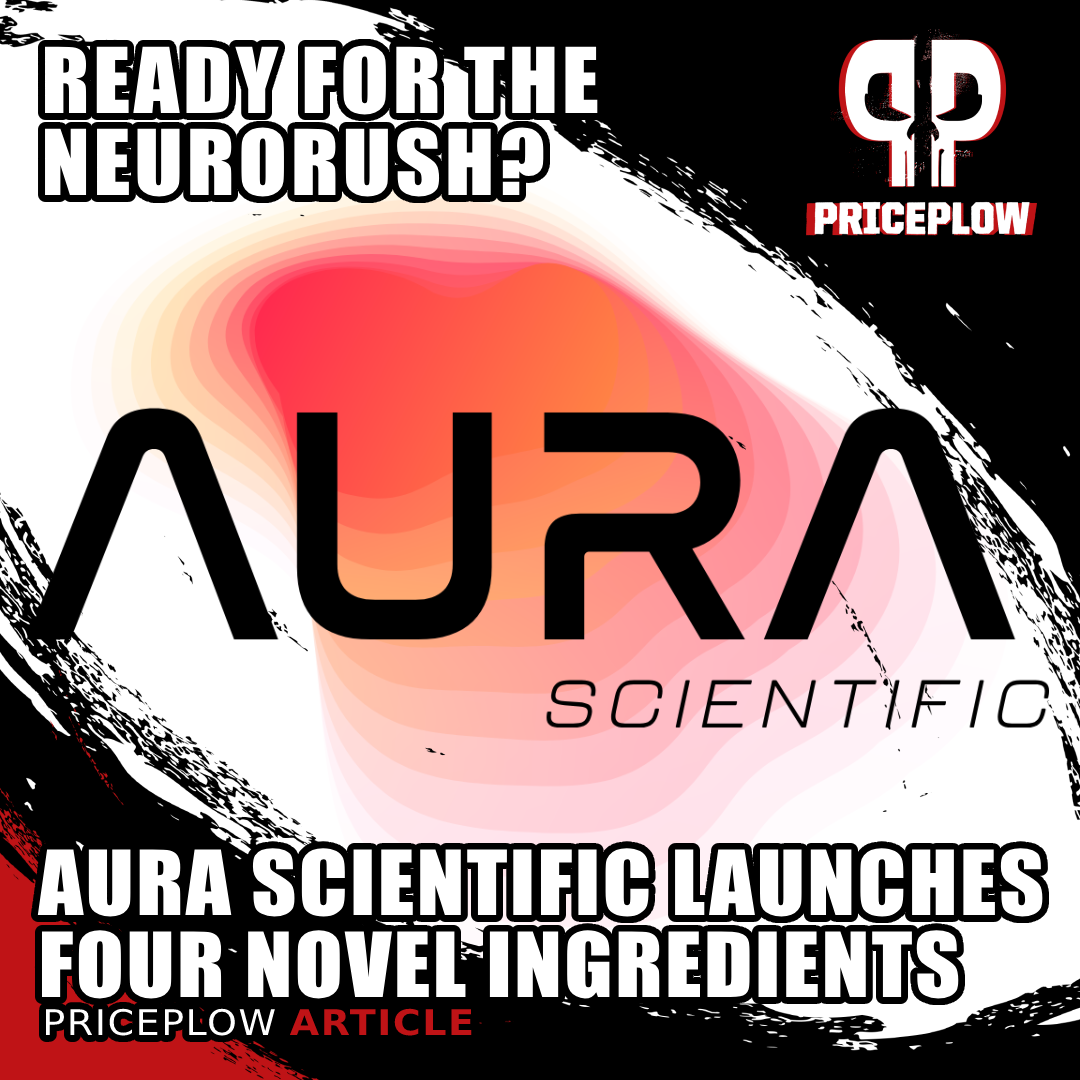
A new novel ingredient developer named Aura Scientific has launched, with four new ingredients that include a feel-good coffeefruit extract named NeuroRush. Get the first peak here today!
There's simply something about this ingredient. It won't replace citrulline or nitrates, but it can can certainly complement them.
Although there's some overlap, each constituent has a different emphasis, contributing unique benefits to support vascular health and enhance workout performance: Mangifera indica (mango fruit extract) provides potent antioxidant and cardiovascular benefits, while Kaempferia parviflora (black ginger) enhances physical performance and metabolic health. Ginkgo biloba (leaf extract) supports neuroprotective and cardiovascular functions, and Pinus massoniana (pine bark extract) offers robust antioxidant and vascular health benefits.
Read more about Aura Scientific on the PricePlow Blog, and be sure to sign up for our Aura Scientific news alerts below. You can also see all of our other articles tagged with EndoFlo after that.
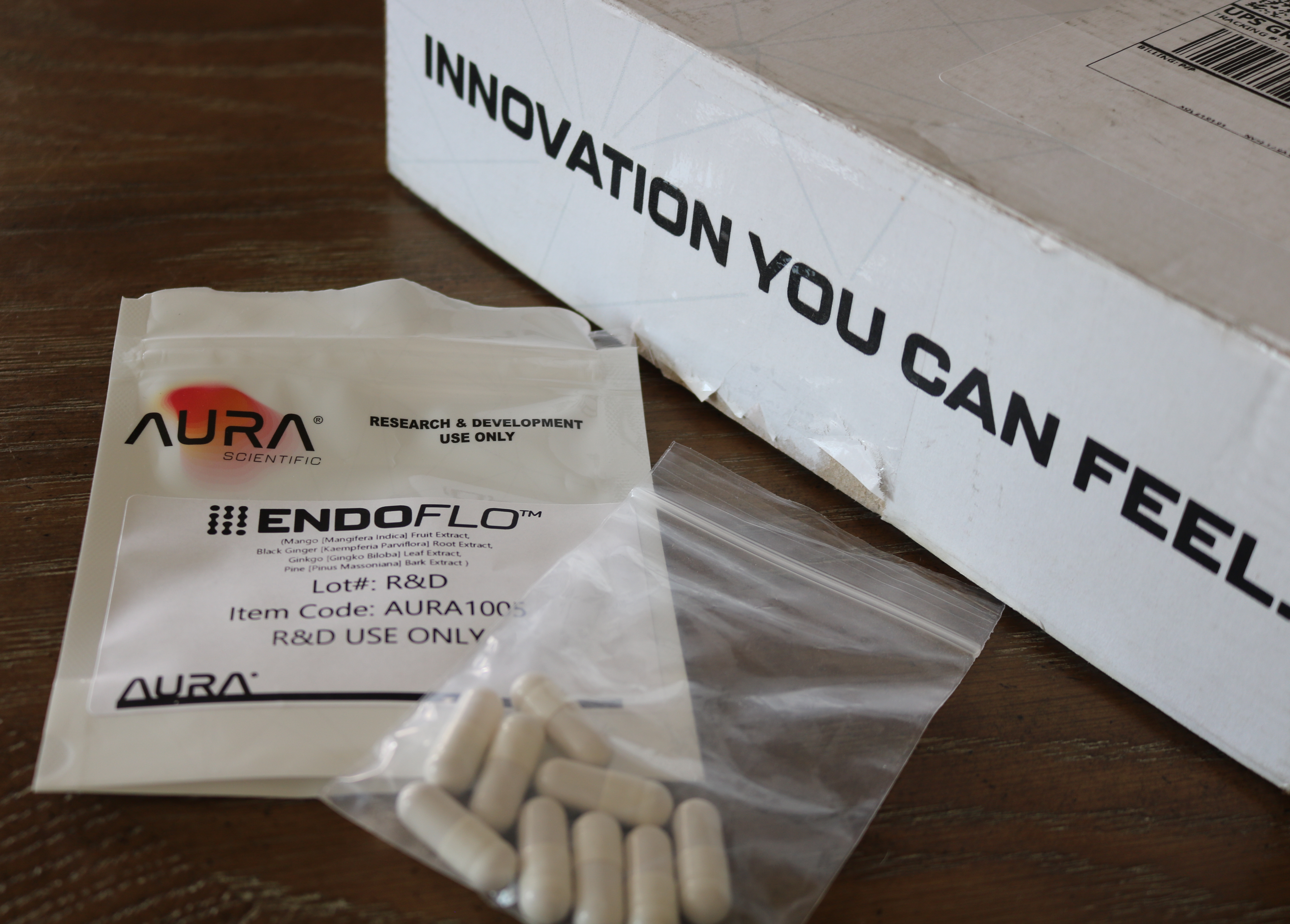
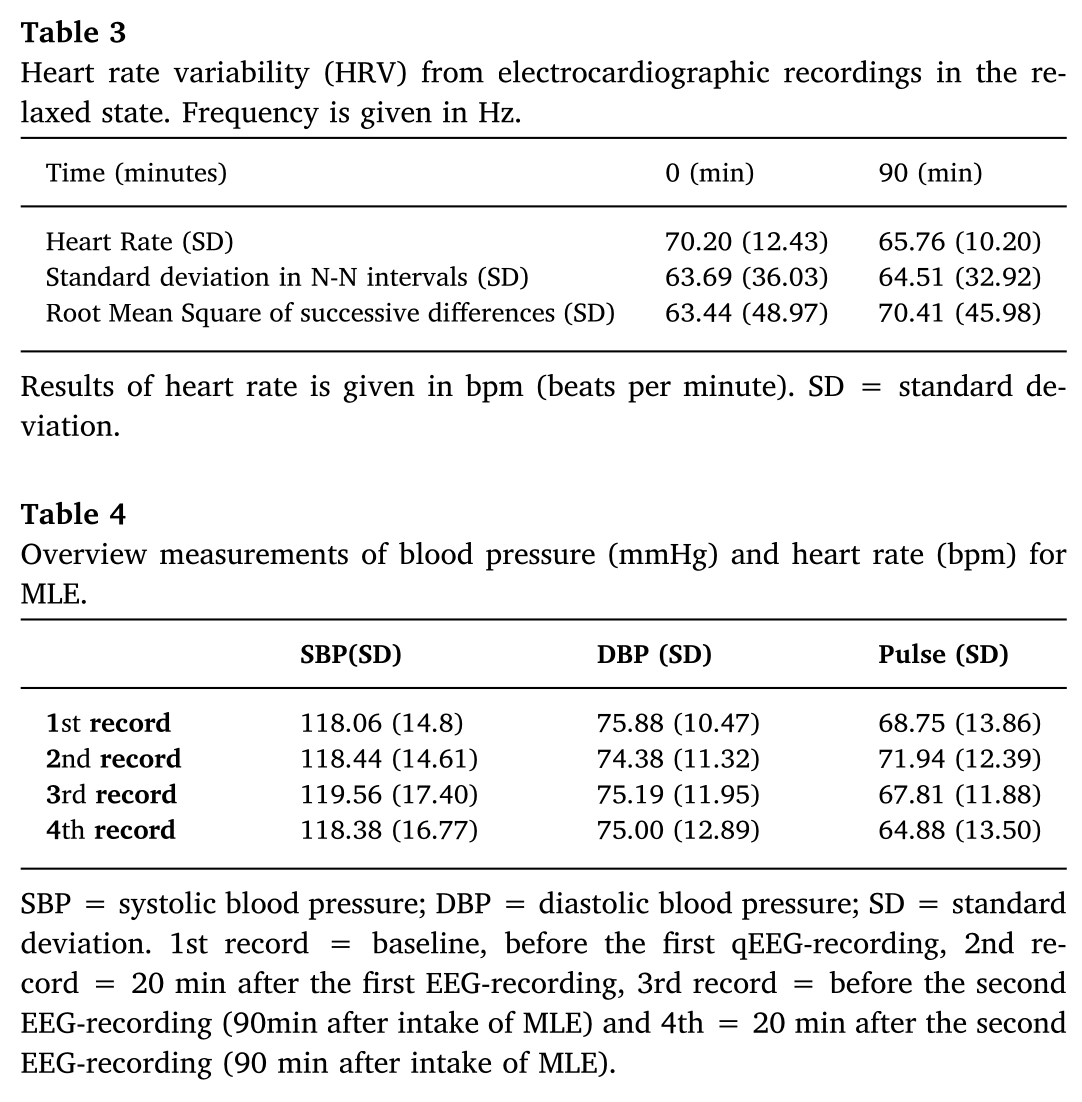

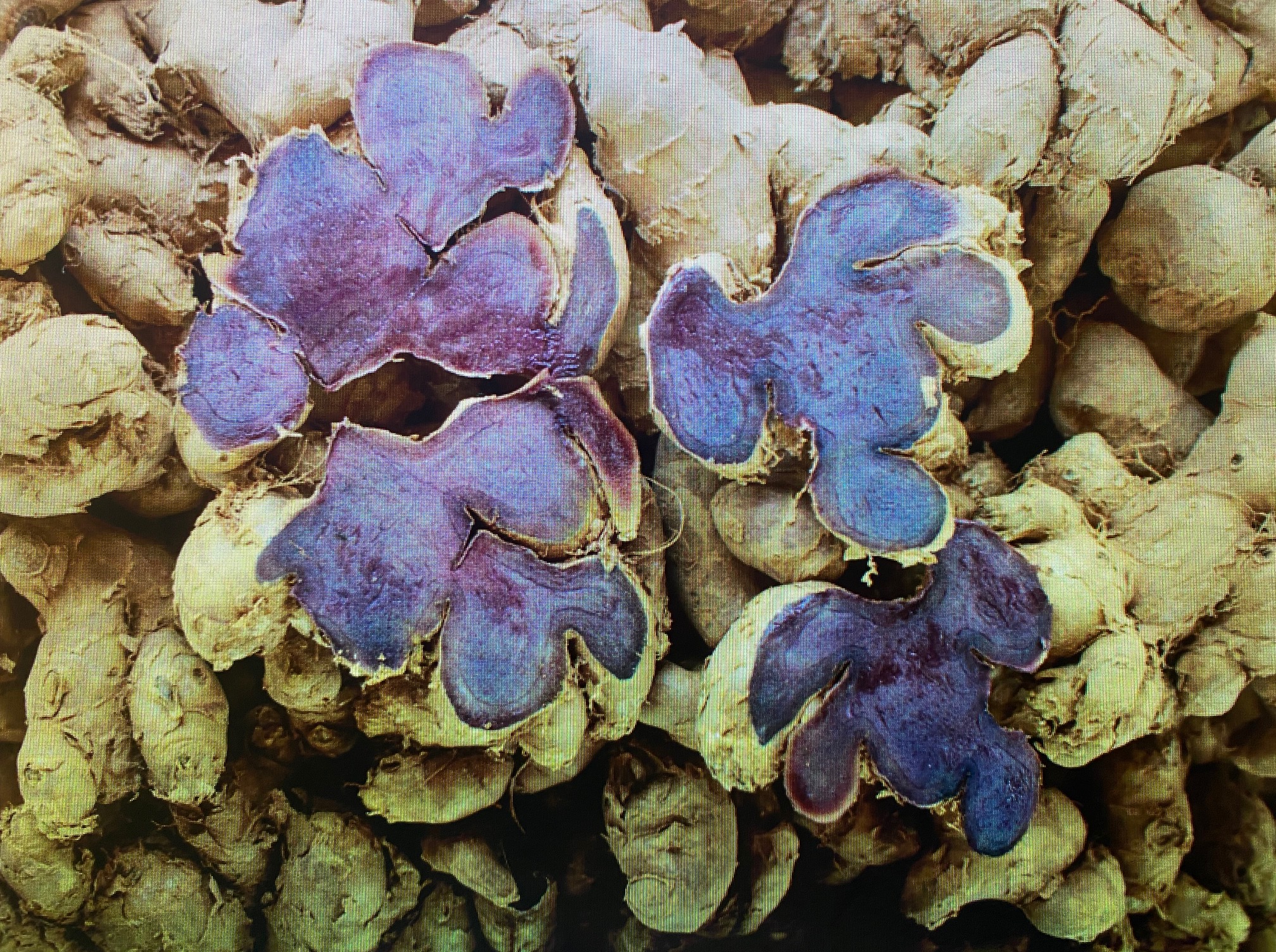

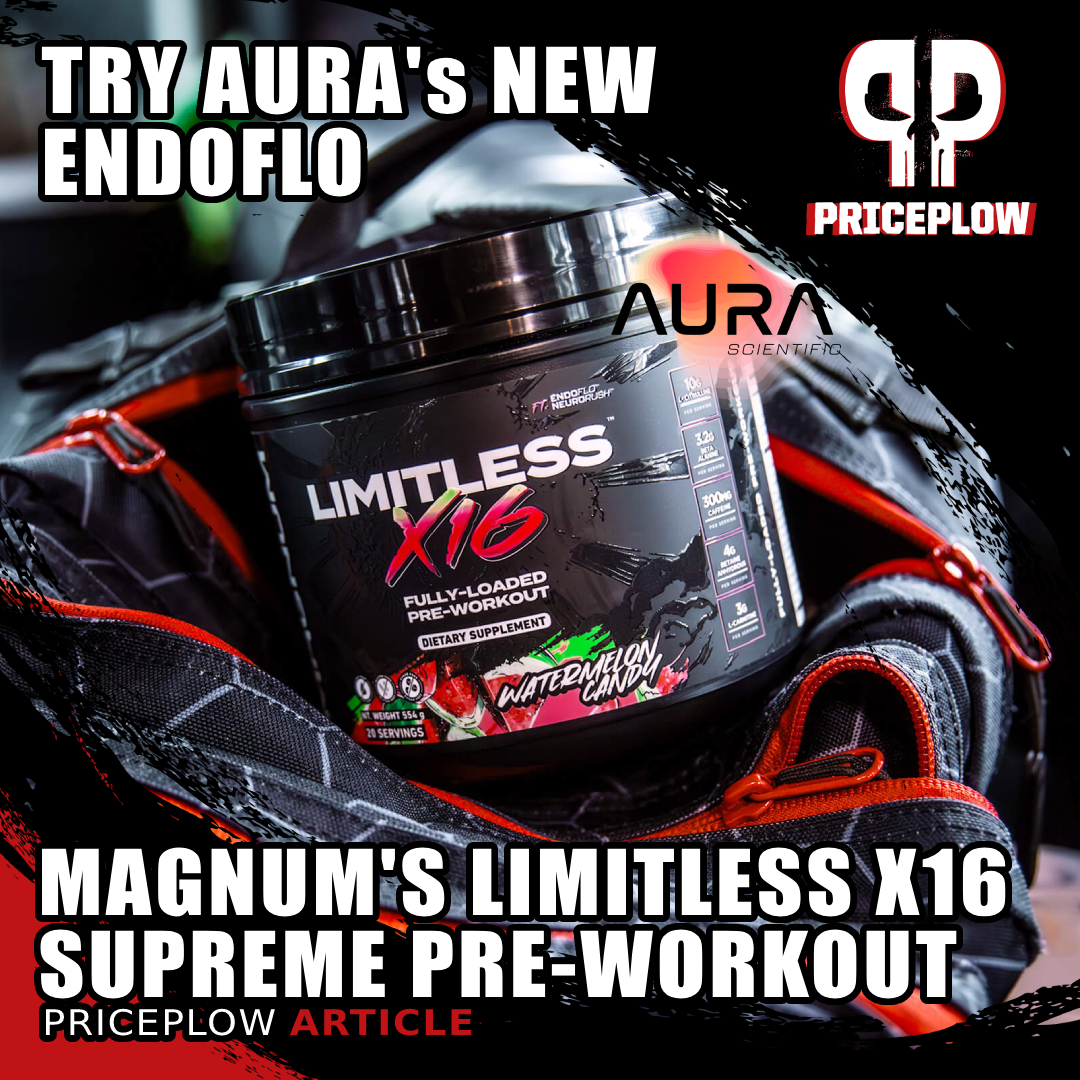
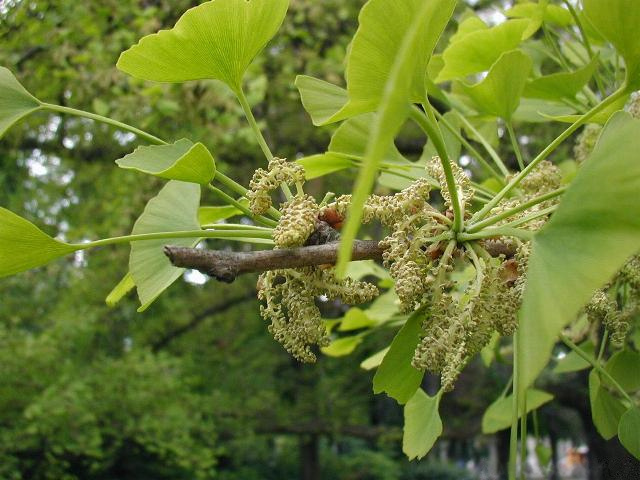
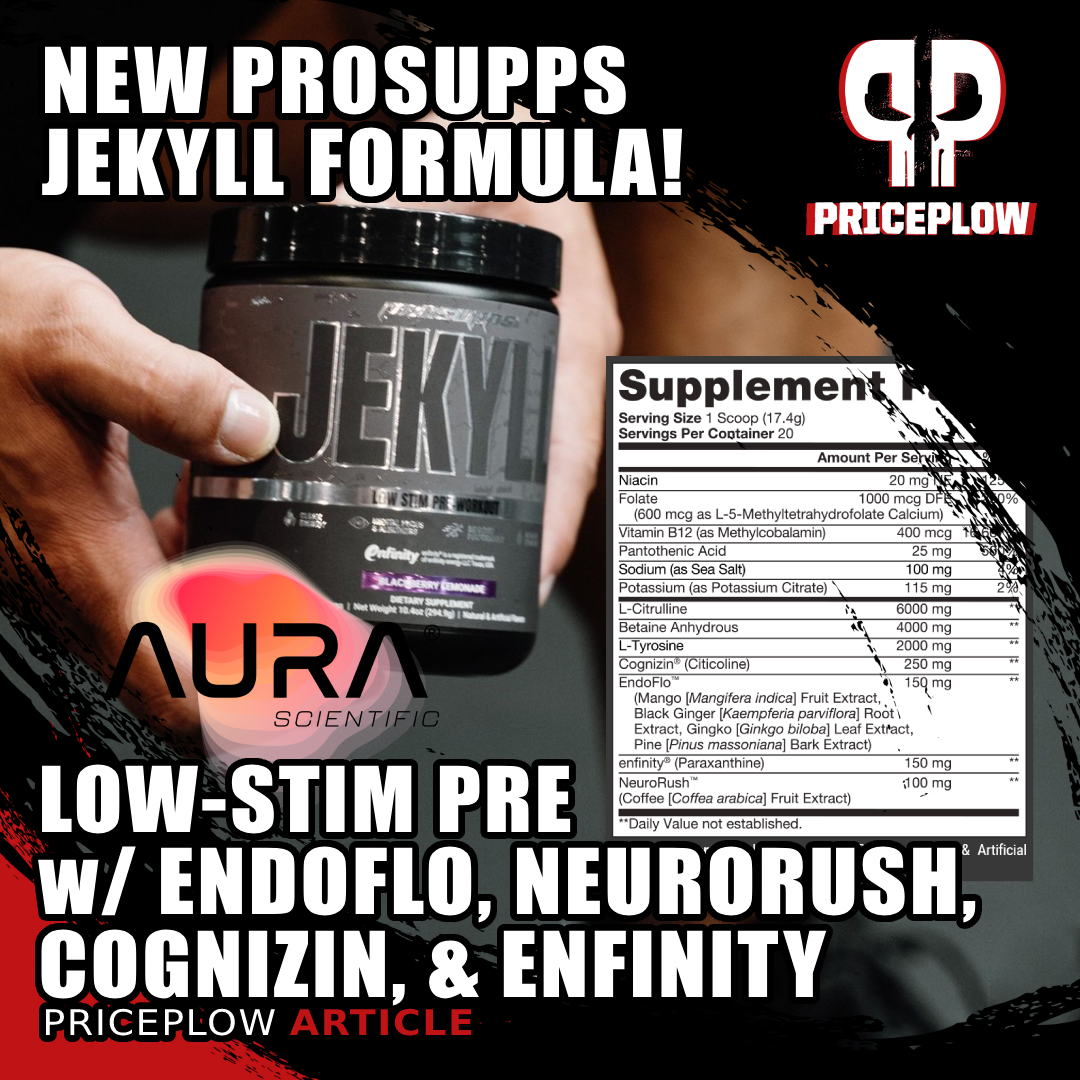



Comments and Discussion (Powered by the PricePlow Forum)